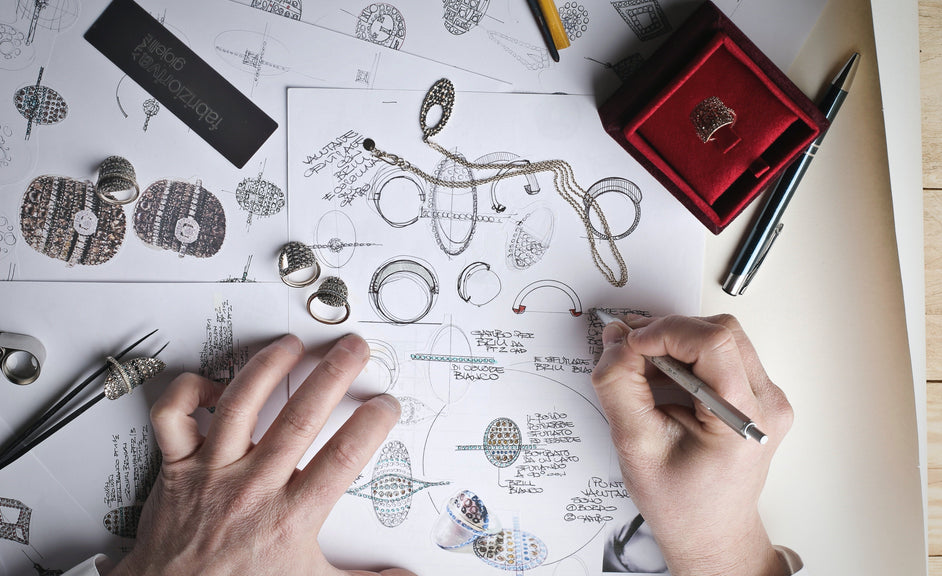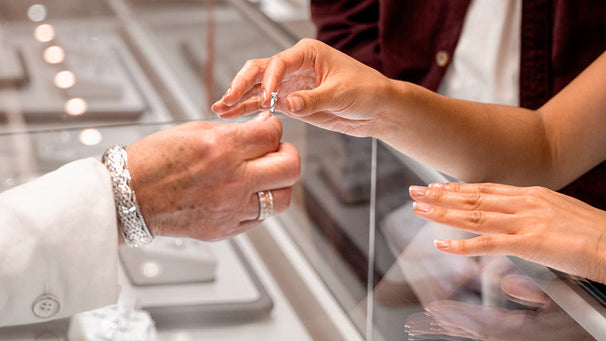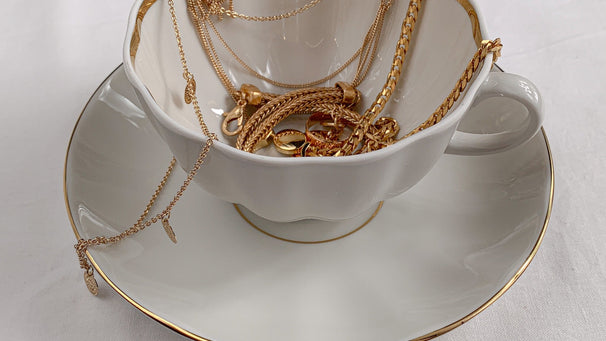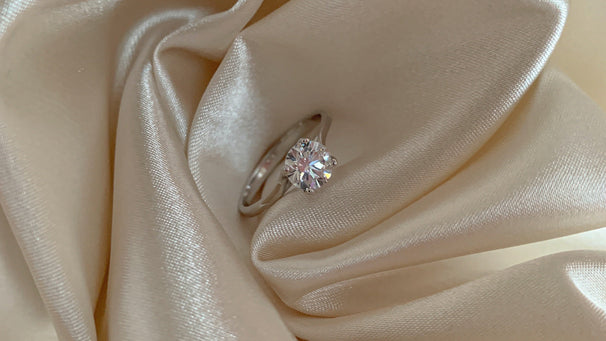Jewellery crafting steps
Creating jewellery involves several steps, which are often unknown until you visit the crafting workshops. Here is a brief overview of each of the steps involved, from the initial sketch to delivery of the jewellery to the customer.

The Sketch
When a customer requests a specific piece of jewellery, if it does not already exist, a sketch must be created incorporating its complete characteristics. This sketch can be drawn by the customer, or simply by our experts for the realization of the project. We can also use one or more of our existing pieces of jewellery as a starting point, to create a unique piece that meets the customer’s desires. In fact, what is important, is to fully understand the customer’s specifications in order to ensure his or her satisfaction.
the prototype
An artist then designs a prototype based on the drawing. It is normally slightly larger than the final result, as approximately 5% of its size will be lost during the jewellery finishing process. A rubber mould is then made to preserve the imprint of this prototype. This mould is cut so that it can be easily opened to remove the item. This mould will therefore be used in cases where several items of the same model need to be cast. In cases where only one piece of jewellery will be made, no mould is made, just a prototype made of wax.
wax replica
Liquid wax is injected into the rubber mould, which is then left to cool and harden for a few minutes. The wax can then be removed from the mould, creating a perfect replica of the jewellery (without the stones).
The cylinder
Once several wax replicas are ready, they are glued onto a hardened wax rod using hot wax. They are arranged in the shape of a tree, without touching each other. The tree is then placed in a metal cylinder and we pour heat-resistant plaster into the cylinder to encase it entirely.
Melting the wax
The cylinder is then placed in a high-temperature oven to remove the wax and to leave only the negative imprint of the jewellery in the plaster.
Gold blends and alloys
We then determine the blends of gold and different metals (alloys) required to obtain the composition of the chosen metal. The choice of alloys will determine the colour of the gold, and its quantity will determine its purity. (75% gold for 18K, 58.3% for 14K, and 41.7% for 10K)
GOLD MELTING
This blend is then heated to nearly 1000 degrees and injected into the plaster cylinder. The liquid metal will then fill the negative imprints of the jewellery.
UNmoUlding
Once cooled, the plaster mould is destroyed, leaving only the gold jewellery tree. At this stage, the gold is not looking great; it is not shiny and has several flaws that the following steps will correct. The various pieces of jewellery are cut from the tree and given to the jeweller one by one.
finalizing the setting
The jeweller will then work on the piece to give it its distinct appearance. The different parts of the piece (often of different colours) are assembled, the gold is cleaned and polished, and any casting defects are corrected. The setting is then finalized.
Setting
If the jewellery has diamonds or other stones, it must be taken to a stone setter who will set them. They can be set in various ways, such as prongs, pavé, invisible, or other. This delicate operation requires a great deal of patience and precision.
Finishing
Finishing involves giving the jewellery its final shine and ensuring that it meets the required quality standards. The jewellery must be hallmarked, which means stamped with the carat weight and trademark (legally required). The jewellery is then polished and cleaned in an ultrasonic bath, for final inspection with a magnifying glass to ensure the work has been well done.
And there you go, the jewellery is now ready to be worn. All of these steps cannot be achieved in a single day. It often takes several weeks to complete the work required.
It is recommended to have the jewellery checked at least once a year to ensure that no part has been broken or needs to be redone or thickened, as gold wears out over time. A good polish will restore the jewellery to its original lustre and will allow the jeweller to check each of its components.


